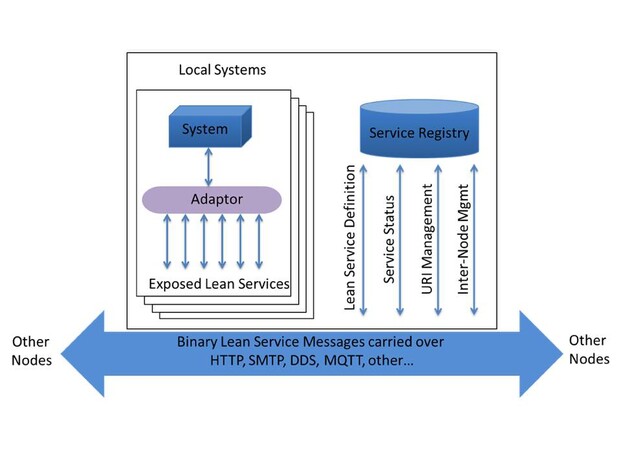Lean Services Overview
The Lean Services Architecture includes definitions of message format, Lean Service calls and events, along with an architectural pattern for implementation that includes a Service Registry and a small number of essential messages.
Any system can offer an interface with forward and backward version compatibility using Lean Services, either directly or, as shown, by using a software adaptor.
All communications within the Lean Service architecture and between nodes use Lean Service calls and events.
Any system can offer an interface with forward and backward version compatibility using Lean Services, either directly or, as shown, by using a software adaptor.
All communications within the Lean Service architecture and between nodes use Lean Service calls and events.
Lean Services Principles
Strong Architecture
- Open, published and sufficiently specified to ensure compatible LSA implementations;
- Adheres to the principles of SOA, with loose coupling between modular components;
- Version control designed in for managed forward and backward service compatibility.
Familiar & Simple
- Simple to understand in concept and simple to implement;
- Familiar concepts that do not require new skills or techniques by architects, designers and programmers.
Software solution
- The LSA is software only and provides low implementation overhead;
- Suitable for lean (low powered) computing devices and lean (low bandwidth) communications;
- Operating system, programming language and transport protocol neutral.
Flexible
- Assume on-going core improvements, for example security and safety, through schema definition and functionality updates;
- New systems and associated services can be quickly and easily added.
